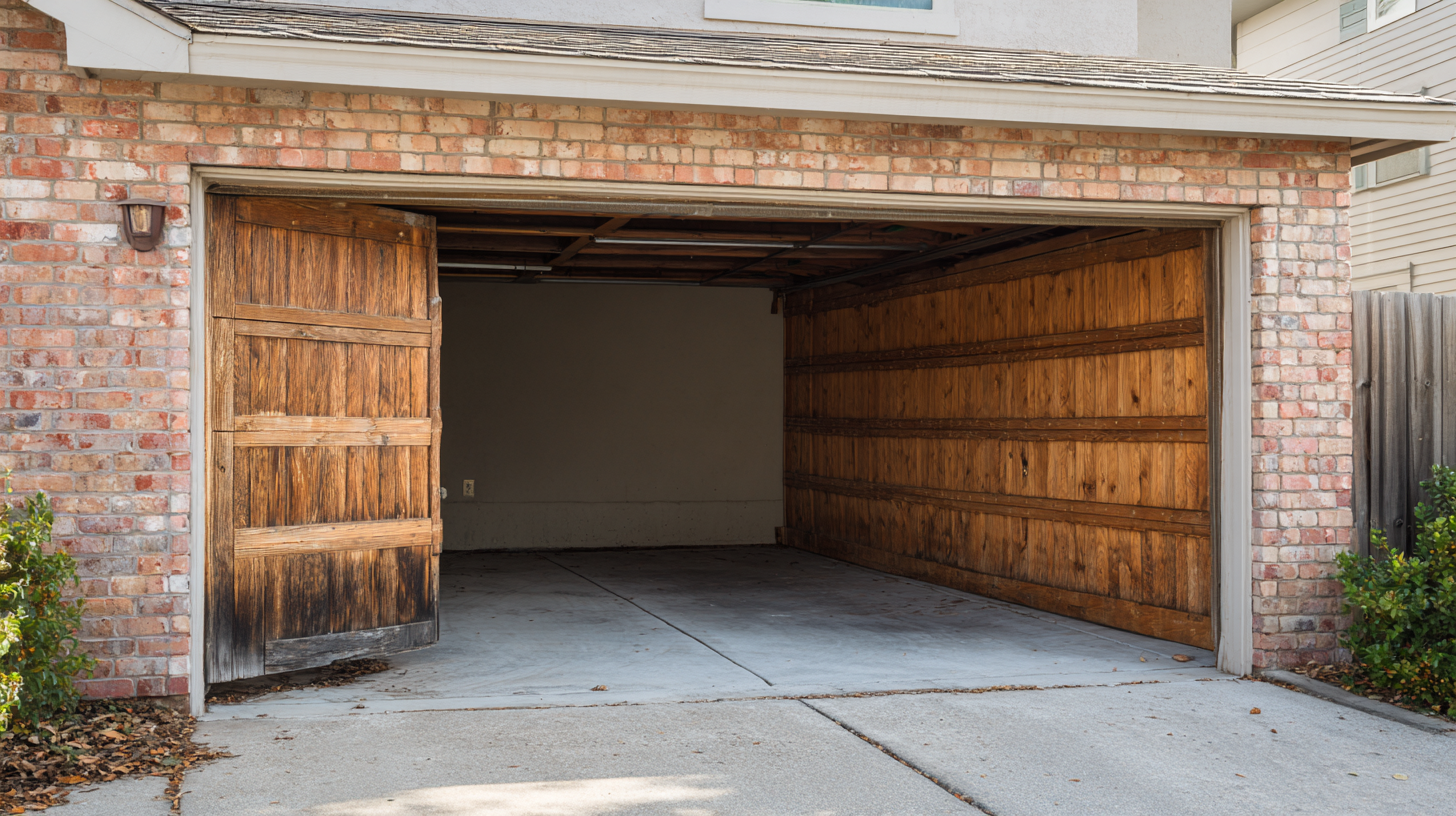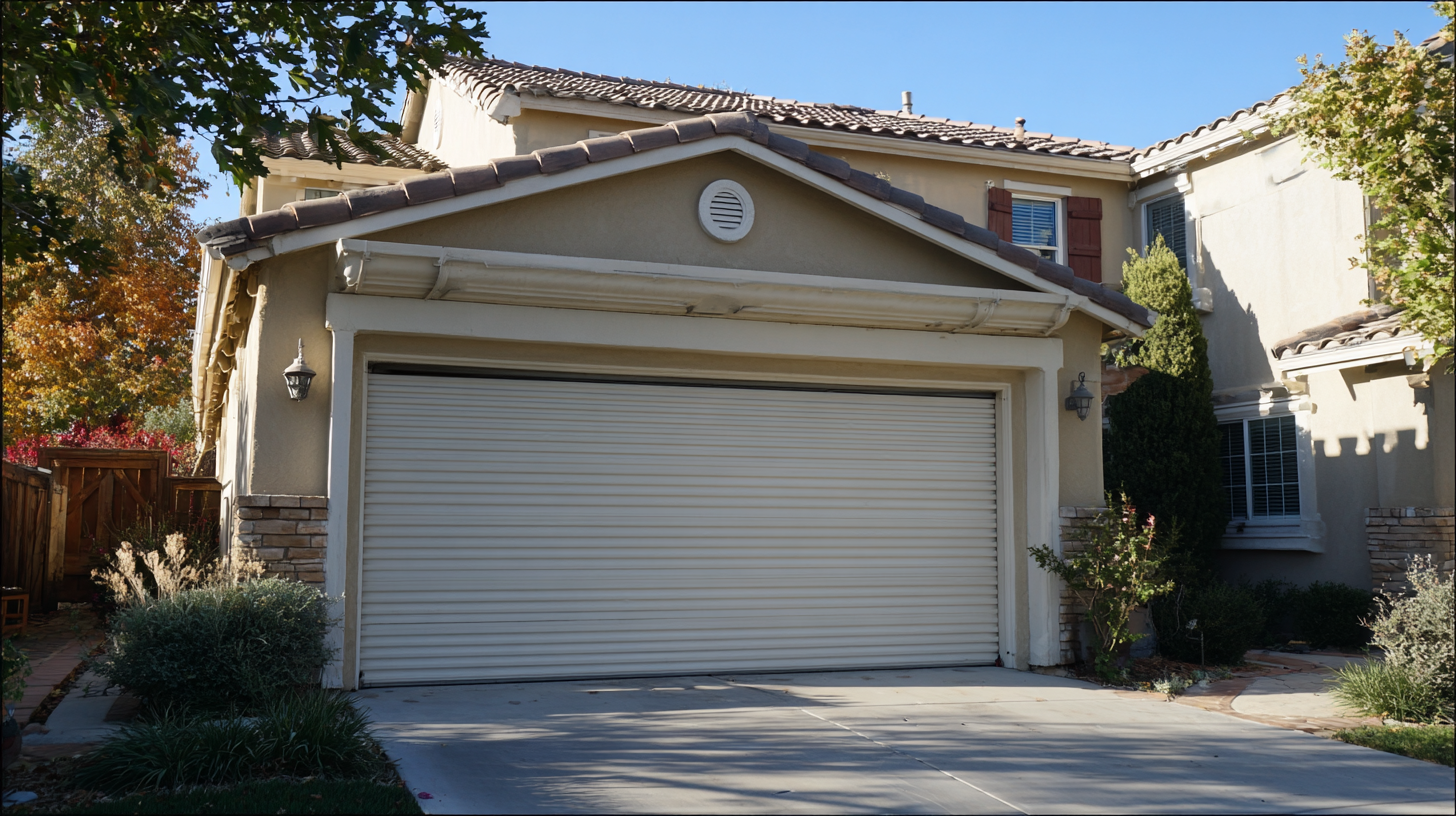A properly maintained garage door is essential for ensuring the safety and convenience of your home. According to the International Door Association, a staggering 70% of homeowners are unaware of the critical importance of regular garage door tune-ups, which can prevent costly repairs and enhance the lifespan of their doors. Research indicates that neglecting these essential maintenance tasks can lead to unexpected breakdowns, costing homeowners an average of $500 in repairs. Furthermore, a study published by the Garage Door Manufacturers Association highlights that regular garage door tune-ups can improve the door's operational efficiency by up to 40%. By understanding the significance of a "garage door tune up," homeowners can not only save on potential future costs but also ensure that their garage door operates smoothly and safely year-round. Implementing routine maintenance practices is not just a luxury; it's a necessity for preserving the integrity of one of the most frequently used entrances to their home.

 Garage door springs play a critical role in the functionality of your garage door, affecting its performance and durability. Regularly checking and adjusting your garage door springs is essential to ensure optimal operation. According to industry statistics, misaligned or worn-out springs can lead to increased wear on other components, resulting in costly repairs and safety hazards. Homeowners should inspect their springs every few months, looking for signs of rust, deterioration, or misalignment.
Garage door springs play a critical role in the functionality of your garage door, affecting its performance and durability. Regularly checking and adjusting your garage door springs is essential to ensure optimal operation. According to industry statistics, misaligned or worn-out springs can lead to increased wear on other components, resulting in costly repairs and safety hazards. Homeowners should inspect their springs every few months, looking for signs of rust, deterioration, or misalignment.
Additionally, experts recommend adjusting the tension of the springs to maintain proper balance. A well-balanced garage door should stay in place when lifted halfway. If it tends to drift up or down, it's an indication that the springs need adjustment. By investing a small amount of time into this crucial maintenance task, homeowners can extend the lifespan of their garage doors and enhance their overall safety. Remember, when in doubt, it's best to consult with a professional to handle spring adjustments, as improper handling can lead to injury or damage. Maintaining your garage door springs ensures a smooth and safe operation, contributing to an efficient home environment.
 Proper lubrication is essential for maintaining the functionality and longevity of your garage door mechanisms. According to the Garage Door Manufacturer's Association (GDMA), approximately 30% of garage door repair calls could be avoided with regular maintenance and lubrication. Over time, components like rollers, hinges, and tracks can accumulate dirt and grime, which can lead to increased friction and wear. Regularly applying a suitable lubricant helps to ensure that these parts operate smoothly, reducing the risk of breakdowns and extending the life of your garage door.
Proper lubrication is essential for maintaining the functionality and longevity of your garage door mechanisms. According to the Garage Door Manufacturer's Association (GDMA), approximately 30% of garage door repair calls could be avoided with regular maintenance and lubrication. Over time, components like rollers, hinges, and tracks can accumulate dirt and grime, which can lead to increased friction and wear. Regularly applying a suitable lubricant helps to ensure that these parts operate smoothly, reducing the risk of breakdowns and extending the life of your garage door.
To effectively lubricate your garage door, it’s crucial to select the right type of lubricant. Silicone-based or lithium grease are often recommended for garage door applications due to their ability to reduce friction without attracting dirt. The GDMA suggests lubricating key components at least every six months to keep the door operating efficiently. When lubricating, make sure to wipe away any excess product to prevent dirt buildup. A well-maintained garage door will not only operate quietly but will also enhance the security and accessibility of your home. Neglecting this simple task can result in larger, more costly repairs down the line.
When it comes to garage door maintenance, one of the often-overlooked areas is the tracks. Keeping the garage door tracks in good shape is crucial for ensuring smooth operation and extending the lifespan of your door. To start, inspect the tracks regularly for any signs of damage or wear. Look for bent areas or blockages that might prevent the door from sliding properly. If you notice any irregularities, it’s wise to address them promptly to avoid further complications.
Next, a proper cleaning routine is essential. Dust and debris can accumulate in the tracks over time, which can impede the garage door's movement. Use a soft cloth to wipe down the tracks and remove any buildup. For tougher grime, a mild soap solution can provide a deeper clean. Afterward, make sure to lubricate the tracks with a silicone-based lubricant. This will not only help with smooth movement but also protect against corrosion and rust.
Additionally, it's important to check the alignment of the tracks regularly. Misalignment can lead to increased friction, which may cause the opener to work harder and lead to premature wear. If the tracks appear off-kilter, adjust them carefully by loosening the screws and repositioning the tracks until they are aligned correctly. By incorporating these essential steps, you can ensure that your garage door functions effectively and remains a reliable part of your home.
Regular maintenance of your garage door is crucial, particularly when it comes to testing safety features. Homeowners should prioritize ensuring that their garage doors operate safely by checking the auto-reverse mechanism, which prevents the door from closing on objects or pets. This feature should trigger whenever it detects an obstruction, allowing for safe usage every time. In addition, homeowners should inspect the safety sensors regularly to confirm that they are aligned correctly and functioning well. A minor misalignment can lead to a failure in detecting obstructions, posing a significant safety risk.
Another important aspect is the periodic testing of the emergency release function. This feature allows you to manually operate the garage door during power outages or emergencies, ensuring that the door can be opened safely without the electrical components. Regular checks for rust or wear on the springs and cables are also essential; these components bear the weight of the door and should be in good condition to avoid accidents. By consistently testing these safety features, homeowners can enhance the overall safety and security of their garage door system.
| Maintenance Task | Recommended Frequency | Safety Feature Tested | Testing Method | Notes |
|---|---|---|---|---|
| Lubricate Moving Parts | Every 6 months | Auto-reverse mechanism | Place an object in the path, door should reverse | Use silicone-based lubricants |
| Inspect Cables and Pulleys | Annually | Safety sensors | Check alignment and functionality | Look for signs of wear and tear |
| Check Springs | Annually | Emergency release feature | Test emergency release cord | Ensure it operates smoothly |
| Test Remote Functionality | Monthly | Manual controls | Check all remotes | Replace batteries as needed |
| Clean Door Tracks | Every 3 months | Keypad entry | Verify keypad functionality | Clear any obstruction |
Garage doors are crucial for home security, yet many homeowners overlook their maintenance. Recognizing when to call for a professional tune-up is essential to prevent costly repairs and ensure safety. According to industry reports, about 30% of garage door issues arise due to lack of proper maintenance. Signs that indicate it’s time for a professional check include unusual noises such as grinding or creaking, slow operation, and if the door is off its tracks.
Tips for maintaining your garage door include regularly inspecting the hardware for any loose bolts or screws that could compromise functionality. Lubrication is key; applying a quality garage door lubricant to the hinges, rollers, and tracks can help the door operate smoothly. Furthermore, homeowners should test the safety features of their garage doors monthly, such as the auto-reverse function. This can significantly reduce the risk of accidents, enhancing overall home safety.
If you notice any signs of wear or malfunction, it is prudent to contact a professional. Regular tune-ups not only extend the lifespan of your garage door but can also improve its performance and energy efficiency. Don't wait for a complete breakdown; proactive maintenance is the best strategy to avoid unnecessary hassles.